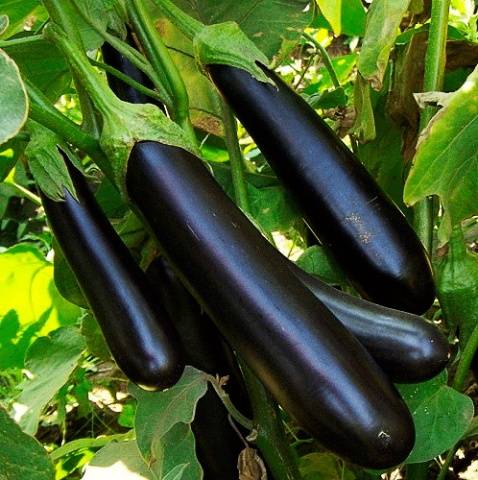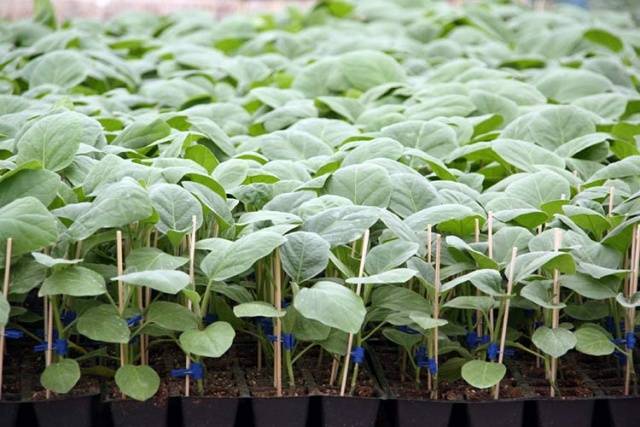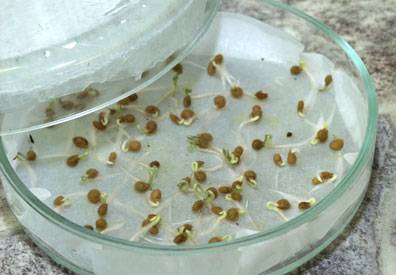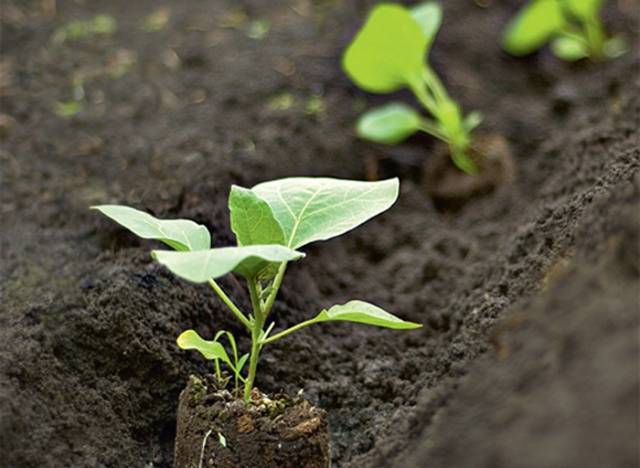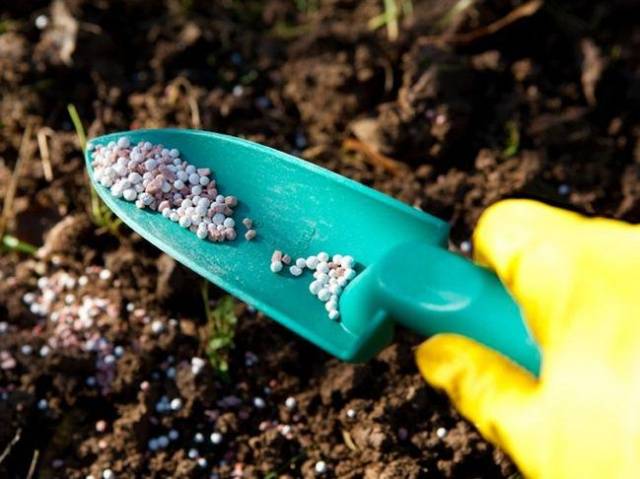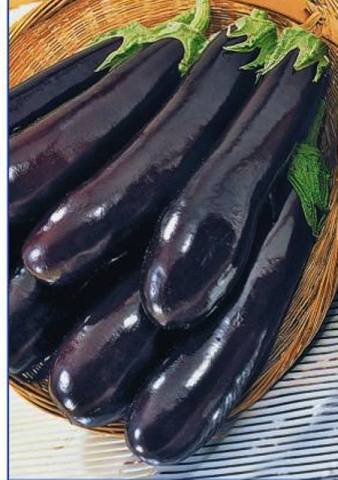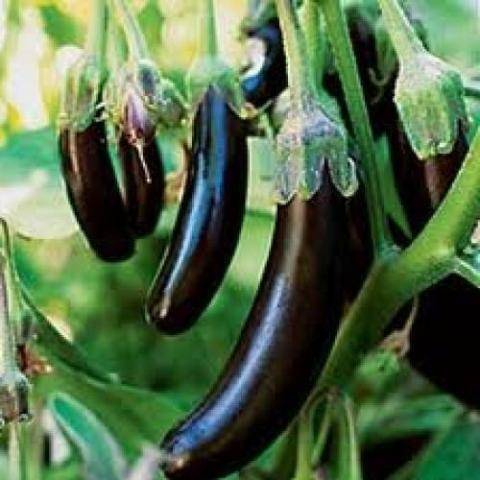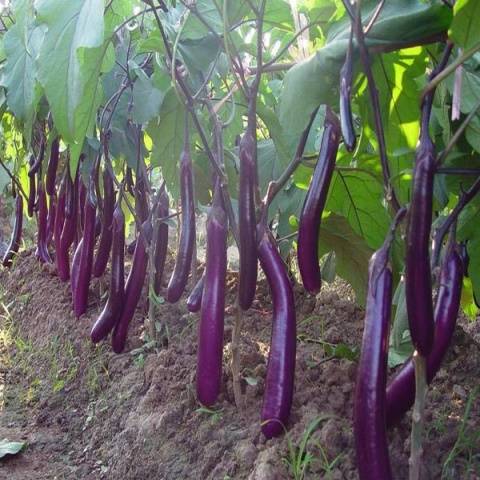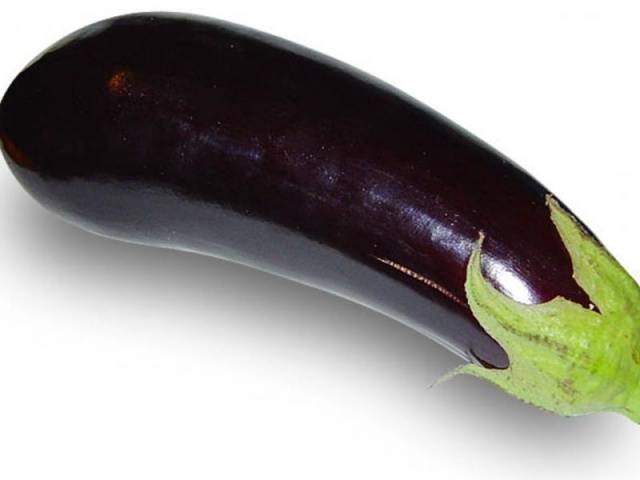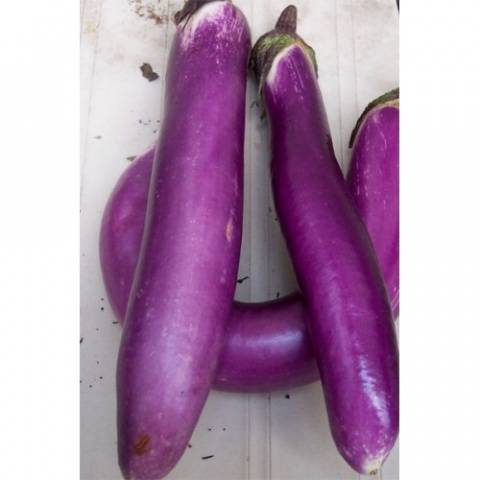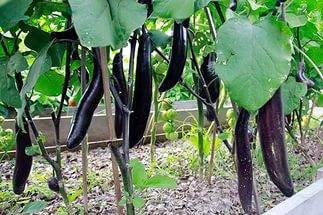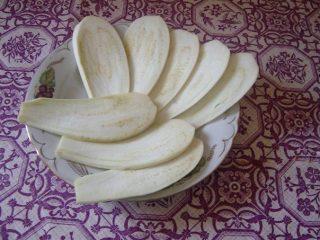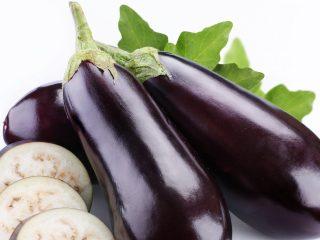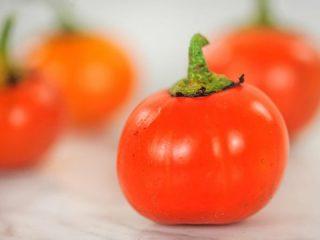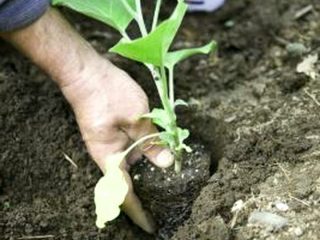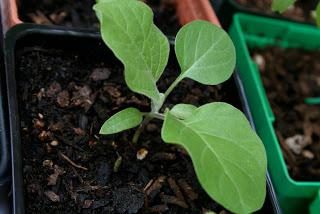Content
When choosing a variety of eggplant for planting, summer residents, first of all, are guided by its taste and what they are going to use the fruits for. For a versatile crop suitable for roasting, baking, and canning, try growing varieties with long fruits. They are tender and pleasant to the taste, the skin has no characteristic bitterness, and the latest hybrids bred by breeders are not only well preserved, but also frozen.
Growing long eggplant
Planting and growing long varieties is not much, but still differs from the usual one. These plants are thermophilic and like to be planted in open soil during a warm period. But before choosing a place for transferring seedlings, it is necessary to take into account several points.
If you are planting seedlings in the ground after root crops and melons, the soil must be loosened and fertilized. To do this, add 50-60 grams of superphosphate and 10-15 grams of potassium to 10 kg of plant and animal humus. Fertilizer is applied to the soil in late autumn, when roots and melons are harvested and work begins to loosen the soil for the winter.
Before transferring long eggplant seedlings to open ground or a greenhouse, harrowing must be carried out in the spring. These works are performed in mid or late March, when the soil is completely dry from the melted snow. In April, in those places where there will be beds with eggplant, enter urea (nitrogen fertilizer).
Growing seedlings from seeds
The long eggplant variety, just like the regular one, can be grown from seeds. The planting material is calibrated and disinfected before sowing. To select healthy seeds, all planting material must be immersed in a saline solution. After 3 minutes, full-bodied seeds will sink to the bottom, and hollow ones will float up. The selected grains are washed several times with warm running water and then dried at room temperature by spreading them out on a cotton napkin.
Seeds of a long variety must be germinated before planting in the ground. To do this, pour the calibrated planting material into a shallow plate or saucer, cover with a layer of filtered paper moistened with a growth stimulator. Place a plate with seeds in a warm place. After 3-5 days, they should hatch.
In the greenhouse
If you are going to grow seedlings in a greenhouse or greenhouse, the substrate for the seedlings must be prepared in advance. For this, the soil is covered with a thick layer of manure (10-20 cm) and left for 2-3 weeks. In early March, planting material can be sown in such a soil. In addition, all wooden parts of a greenhouse or greenhouse are treated with a 10% solution of bleach or freshly slaked lime.
The temperature in the greenhouse during the growth of seedlings is maintained within 23-250C. While the seedlings are in the greenhouse, the temperature is controlled as follows:
- In the afternoon - 18-200FROM;
- At night - 12-160FROM.
Experienced gardeners know how important it is to maintain a strong root system of eggplants during the transplanting process, therefore growing seedlings in a greenhouse or greenhouse is considered optimal for obtaining healthy and disease-resistant plants.
In landing containers
To get a tasty and rich harvest, planting material of long varieties of eggplants is planted in humus-peat planting containers. The seedling substrate is prepared from the calculation:
- Humus - 8 parts;
- Sod land - 2 parts;
- Mullein - 1 part.
All components are thoroughly mixed and allowed to stand for 1-2 days. Then, 50 g of superphosphate, 10 g of urea, 5 g of potassium are added to 1 bucket of the resulting substrate. The resulting soil is filled into containers so that it takes up 2/3 of the volume. The seeds that have hatched are planted in it and sprinkled with a layer of soil of 1 cm. The seedlings are watered in the morning, once a day, and after a few days, as needed, fresh soil is poured into the pots.
As soon as the seedlings of the long eggplant have grown, matured and are ready to be transferred to the garden bed, the open ground is prepared for planting. To do this, fertilize it with any superphosphate fertilizer at the rate of 250 gr per 1m2.
How to Grow Long Purple Eggplant Seedlings
Of all the long varieties of eggplant, the Violet Long variety is the most famous in central Russia. Consider growing long eggplant seedlings using this variety as an example.
First of all, it should be said that all long eggplants need regular feeding. This applies to both seedlings and the plant itself, until the harvest is fully ripe.
For seedlings of the Long Violet variety, we use the following type of fertilizer (per 1 bucket of water):
- Potassium salt 15-20 gr;
- Ammonium sulfate - 20-25 gr.
Among the organic fertilizers for growing long eggplants, gardeners use slurry, bird droppings and mullein. At the same time, bird droppings or mullein are pre-fermented in a volumetric container for 7-8 days before feeding. The resulting mass is diluted with water, in the ratio:
- One part poultry manure to 15 parts water;
- One part mullein to 5 parts water;
- One part slurry to 3 parts water.
It is recommended to feed young seedlings of long varieties of eggplant, alternating organic and nitrogen fertilizers.
The first time the seedlings are fertilized 7-10 days after the appearance of the first shoots, the second is carried out after another 10 days.
Two weeks before transplanting the Long Violet variety into the ground, the seedlings must be hardened. If you grew seedlings in a greenhouse, then the frame is first opened for 1-2 hours, and then, gradually increasing the time, hardening is brought to 8-10 hours a day. It is very important to take the air temperature into account here. If spring is late and the daytime temperature barely reaches 10-120C, the hardening time must be shortened.
2-3 days before transferring the seedlings, be sure to treat the eggplant with a solution of copper sulfate (50 g of the substance is taken in a bucket of water). This will prevent the possible development of fungal diseases.
In open ground, the Long Purple variety is planted only when the seedling is strong and has at least 5-6 full-fledged leaves.
Eggplant "Long Purple" is one of the best early maturing and fruitful varieties. The ripening period of the fruit is 90-100 days, the height of the bush does not exceed 55-60 cm.
Fruits in the period of full ripening reach a length of 20-25 cm, have a dark purple color. The weight of one eggplant is 200-250g. The variety has excellent marketability and taste, and is widely used in canning and salting. A distinctive feature of the variety is a long growing season with a "friendly" return of fruits.
The best varieties of long eggplant
On the shelves of shops and markets today you can see a large number of eggplant seeds, of various shapes and colors. Among them are long eggplants, recommended for planting in the southern regions and in Central Russia. Here are just a few varieties known among farmers due to their high yield and excellent taste.
Banana
The variety belongs to the early maturing. The ripening period of the fruit is 90-95 days from the moment of germination.
Resistant to lower temperatures in the air and soil, viral and fungal diseases. Seedlings can be grown both at home and in a greenhouse outdoors.
The average weight of the fruit is 150-170 g, the length is up to 25 cm. A distinctive feature of eggplant is that the fruit is somewhat curved when ripe, resembling the shape of a banana.
The most delicate
This variety belongs to the mid-season. Harvest in warm regions begins in early August, in the northern regions - in early and mid-September. The length of the fruit is 20-22 cm, and the diameter often reaches 6-7 cm. The average weight is 200-250 grams. Features of the variety - bushes in open ground grow up to 100-120 cm in size, therefore, in the process of growth and fruiting, the plant needs a garter.
Long magenta
The variety visually resembles "Long Violet", with only one difference - its fruits are lighter and thinner. Eggplant is mid-season. The bush grows up to 60 cm. Fruits during ripening period reach a mass of 200-220 g, length - up to 20 cm. The variety has high taste and market characteristics, is resistant to temperature changes. It is recommended to grow seedlings in plastic greenhouses.
Long Pop
A new variety of long eggplants with a high yield. Eggplant belongs to the early ripening period, the ripening period is 60-70 days from the first germination. In the southern regions of Russia, the first fruits can be obtained as early as mid-July. The height of the bush does not exceed 60-70 cm. The average weight of the fruit is 250 g, the length of the fruit is 20-25 cm, and the thickness of individual specimens can reach 8-10 cm.
Scimitar F1
This hybrid is mid-season. Full ripening period is 95-100 days. The plant can stretch up to 80-90 cm in height, so when growing the Scimitar, provide support for its garter. Fruits are dark, lilac with white juicy pulp. The average weight of the fruit is 180-200 g, the length is up to 20 cm.
King of the North
Long eggplant variety, bred by breeders specifically for the northern regions of Russia. The "King of the North" is resistant to sudden cold snaps and winds. The variety is mid-season. Seedlings must be grown only in greenhouse conditions. During full ripening, eggplants can reach up to 30 cm in length, and up to 8-10 in volume. The average weight of the fruit is 250-300 grams.
Conclusion
When choosing long varieties of eggplant for planting, be sure to pay attention to the manufacturer's recommendations specified in the instructions. For how to grow delicious long eggplants, see the video:
